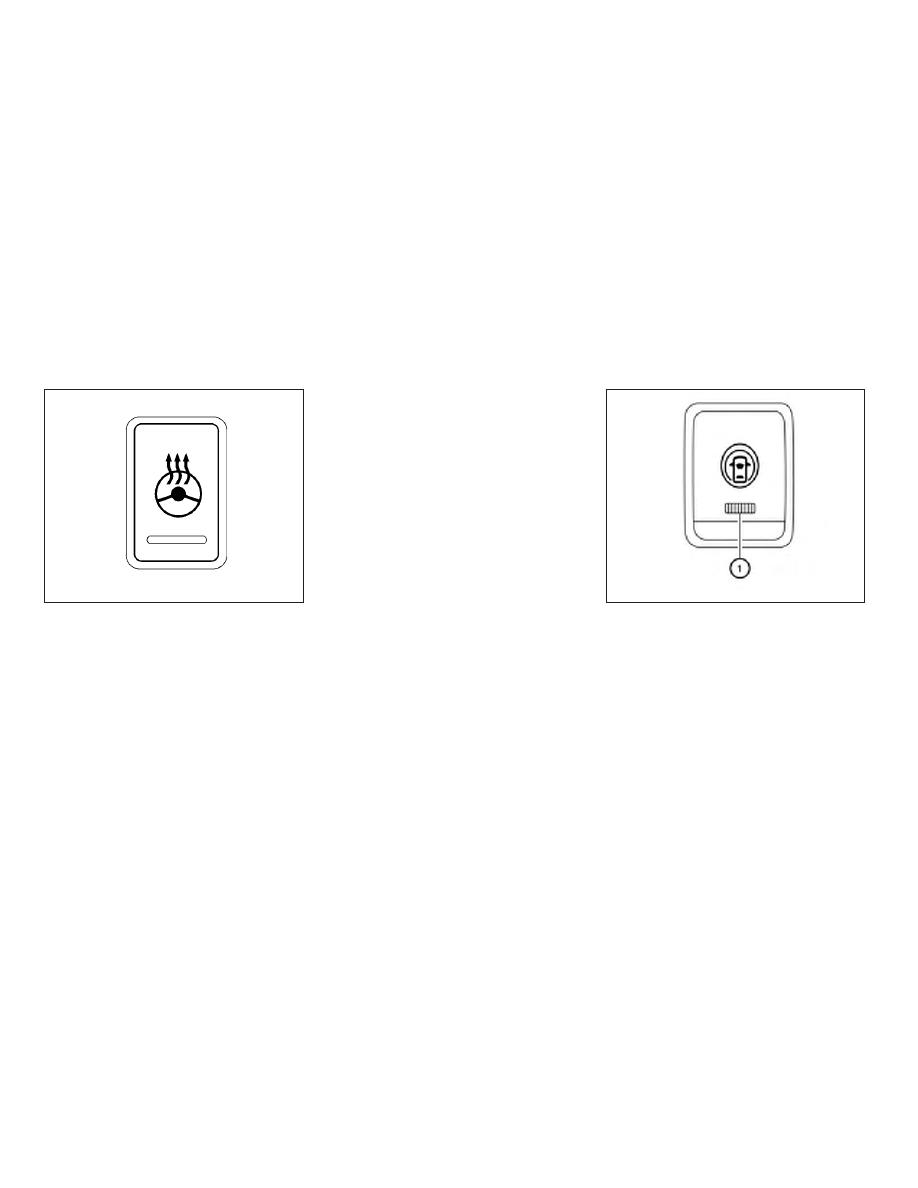Nissan Rogue Hybrid (2019 year). Manual - part 10

The heated steering wheel system is de-
signed to operate only when the surface
temperature of the steering wheel is below
68°F (20°C).
Push the heated steering wheel switch to
warm the steering wheel after the hybrid
system starts. The indicator light will come
on.
If the surface temperature of the steering
wheel is below 68°F (20°C), the system will
heat the steering wheel and cycle off and
on to maintain a temperature above 68°F
(20°C). The indicator light will remain on as
long as the system is on.
Push the switch again to turn the heated
steering wheel system off manually. The
indicator light will go off.
NOTE:
If the surface temperature of the steer-
ing wheel is above 68°F (20°C) when the
switch is turned on, the system will not
heat the steering wheel. This is not a
malfunction.
The dynamic driver assistance switch is
used to temporarily turn on and off the
Intelligent Lane Intervention (I-LI) system
that is activated using the settings menu of
the vehicle information display.
The I-LI system must be turned on with the
dynamic driver assistance switch every
time the ignition is placed in the ON posi-
tion.
When
the
dynamic
driver
assistance
switch is turned off, the indicator
䊊
1
on the
switch is off. The indicator will also be off if
the I-LI system is deactivated using the ve-
hicle information display.
LIC0421
LIC3681
HEATED STEERING WHEEL SWITCH (if
so equipped)
DYNAMIC DRIVER ASSISTANCE
SWITCH (if so equipped)
2-54
Instruments and controls